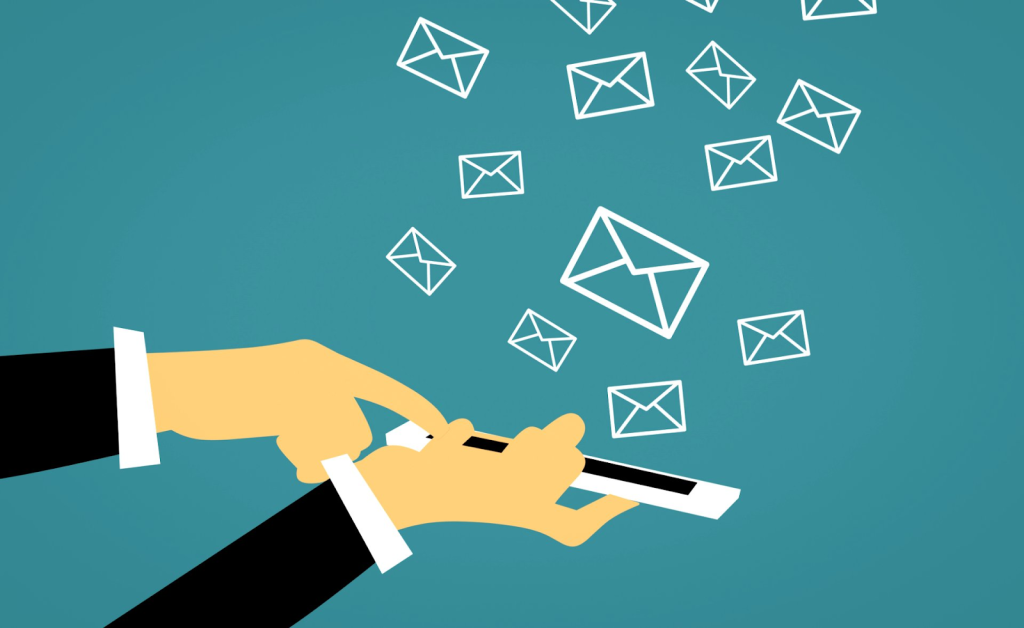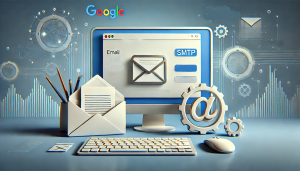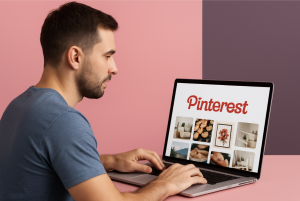Article at-a-glance
– Email is a high-converting traffic source.
– To increase open rates, focus should be on the subject line.
– Shorter subject lines tend to perform better
– Personalizing the subject lines is a successful method.
Just like social media campaigns and blog posts, email marketing is a great way to build brand awareness, increase engagement, and build a personal relationship with your audience. Considering that it’s affordable and easy to get started, personalize, and track performance, it comes as no surprise that 50% of marketers say it’s their most impactful channel.

But just sending emails is not enough to say you have an email marketing strategy; you need to make sure they stand out enough for people to actually open them.
In fact, SEO typically has a conversion rate of 2,4%, whereas email marketing had a 1,3% conversion rate in 2021, as many people ignore emails after they’ve signed up or need more time to be ready for another purchase after receiving a product.
To turn your emails into sales, a strong subject line is crucial to convince your audience what you have to say is worth their while.
“Okay, so how do I make that happen?”
In 2024, we sent 76,714,552 emails and analyzed the data.
Here are the top 10 things we found to increase the odds your emails get opened.
1. Brackets and Indicators
Using brackets and indicators like [VIDEO] or ::STARTING SOON:: is a good way to draw your recipients’ attention. However, not all strategies work as well:
- [PDF] performed best out for stand-alone campaigns at a 31% average open rate
- [DEMO] came in as second with an average 27-30% open rate
- [VIDEO] is also effective, averaging at 26-28% open rates
- ::STARTING SOON:: is not a popular indicator, not even scoring a 20% open rate
- [DAY#] is the winner in sequence campaigns, with an impressive 45-49% open rate
2. Punctuation Patterns
Something as simple as the right punctuation can actually be used to spark interest. Here are some tricks we tested and how they performed:
- Using “vs.” comparisons in the subject line resulted in 28-34% open rates.
- “re” prefix also worked to convince people the email was interesting enough, with 26-31% open rates.
- Believe it or not, question marks are actually a very simple but effective strategy to get people to open your emails and resulted in 25-29% open rates.
More dos and don’ts
Using an ellipsis (…) at the end also works well and was used in many of our top-performing emails. Excessive punctuation, like multiple dots and exclamation marks, was not effective and even reduced open rates.
3. Format Structure
There seems to be a sweet balance between keeping things interesting and appearing too intrusive when it comes to format structure. Some of the key takeaways we found were:
- All caps sections are a no-go.
- Two-part structures with a colon or dash caused emails to underperform and resulted in about 20% open rates.
- If you want to use numbers, save them for later in the line, as numbers at the start perform worse.
- Parenthetical additions like “(inside)” or “(here’s how…)” are a bit of a wild card and didn’t show consistent results.
4. Personal/Casual Markers
Keep it personal! Data from Hubspot reveals that 3 out of 4 marketers see a 20% increase in revenue when they personalize their emails.
We also found that throughout all our emails, personal markers performed really well. Using “my” in the subject line resulted in 25-31% open rates, and first-person statements performed better than third-person.
When we compared “how to” and “how I” did, the latter showed consistently better results. Additionally, “new” in the subject line only works well when it’s paired with specific product/feature names.
For example, “watch me build an Amp Sales Bot in 3 minutes… (ish)” had a 29.08% open rate.
Personalization is also a useful tool to increase your sales, with a 26% higher conversion rate on average.

5. Time/Urgency Indicators
If you want to use time or urgency indicators, here are some things to keep in mind:
- “FINAL” and “Last Chance” only have a 16-20% open rate.
- “NEW” shows better open rate results than “STARTING SOON”
- Be specific; vague time references like “soon” perform worse than a clear 1-hour or 10-minute reminder.
6. Implied Content Types
This is what we found about content teasers in the subject lines:
- “leaked” or “revealed” has 27-29% open rates
- For brackets, [VIDEO] had the best results, followed by [TRAINING] and [UPDATE].
- If you tease about a demo, make sure to combine it with a specific product for higher open rates.
- “guide” or “tutorial,” however, are not implications you want to use according to our data.
7. Benefit Structure
Teasing how the email content will benefit your audience can be effective if it’s done the right way.
- Be specific; direct benefits outperform implied benefits
- This goes for numbers as well; people prefer precise numbers over general claims
- If you incorporate any sort of dollar amount, stray away from the clickbait claims (“how to make $1 million in 1 hour.”) Specific and believable is key.
- Time-based benefits are successful, for example, “[VIDEO] “Bing Backdoor” Traffic Strategy in 10 mins…”

8. Brand References
Using brand references in your subject line can both improve and worsen your open rates. We found that:
- “Microsoft” had a 34% open rate compared to “MSN,” which only had a 21% open rate.
- “Google” works well when it’s in comparison with other brands.
- “Ampifire” performed the best when we combined it with a new feature or update.
- Combining a brand with generic terms like “traffic method” caused emails to underperform.
9. Problem-Solution Structure
A problem-solution structure is an interesting way to spice up your subject lines.
- Our data showed that it’s better to pique your audience’s interest with direct problem statements and questions about problems performing better than solution statements.
- You can also use controversy in your statements to increase engagement.
- The subject line “how I find ‘zero competition products’…” is an example of a well-performing email that, in a simple but effective way, pinpoints a common issue and hints that there is a solution for it in the email.
10. A/B Test Findings
When we did A/B tests, we found that keeping it short, personal, simple, and specific was an overall

Let’s take a look at some winning headlines and some that didn’t do as well in the same campaigns:
Ultimate AI Ads campaign
[DEMO] AmpiFire Paid Ads (30.20% open rate)
vs.
google ad expert reveals how he gets buyer leads for $0.34 each (18.91% open rate)
Big 6 Mini-Course Opt Ins campaign
::Starting Soon:: Getting Published On Business Insider + More (38.65% open rate)
vs.
::Starting Soon:: How To Get Published On “Power Brand” Sites… (29.38% open rate)
Simpler Traffic campaign
is Google punishing small publishers…? (29.18% (open rate)
vs.
this hidden metric WASN’T in the Google Leak! (FB stream starting) (18.21% open rate
Summary
As you can see, adding an ellipsis at the end of every subject line won’t give your open rates a magic boost. It’s about the combination of different strategies and knowing what attracts your audience, so make sure to note down your results and learn from your mistakes.

But we can see some clear patterns.
Keeping it down to 3-6 punchy words did the trick, except in certain cases where a specific benefit was presented (for example, “[VIDEO] Microsoft MSN Traffic Strategy in 10 mins…“)
You should also think that a subject line’s purpose is just an appetizer. Our data proves that the headlines that don’t give it all away perform better.
If you want to learn more about proven marketing strategies that boost your organic traffic, head on over to https://ampifire.com/.
Author
-
CEO and Co-Founder at AmpiFire. Book a call with the team by clicking the link below.
Related Posts

Setting Up Google Workspace for Sending Emails via SMTP
Learn how to set up Google Workspace for sending emails via SMTP with our step-by-step guide to enhance your business…

5 Ways To Use Personality in Marketing To Connect With Your Audience
Learn how using personality in your marketing strategy can help you connect with your audience, stand out from the competition,…

7 Ways To Maximize The Peak Effect Of Your Marketing Campaigns
Looking for ways to ride your peak effects marketing for longer periods of time? Check out our helpful article for…

5 Ways To Market Your Real Estate Business & Listings With Content Marketing Campaigns
When it comes to marketing real estate, the challenges are different from other industries. Before the internet, real estate agents…

5 Free Infographic Submission Sites with DA Above 50 [2025 List]
Learn 5 free high-DA infographic submission sites to boost traffic and earn quality backlinks.

Average Real Estate Cost Per Lead Prices & Rates 2025 | Ads vs. Content
Key Takeaways The average cost per lead (CPL) in real estate typically ranges from $416–$480, but varies significantly by platform,…










